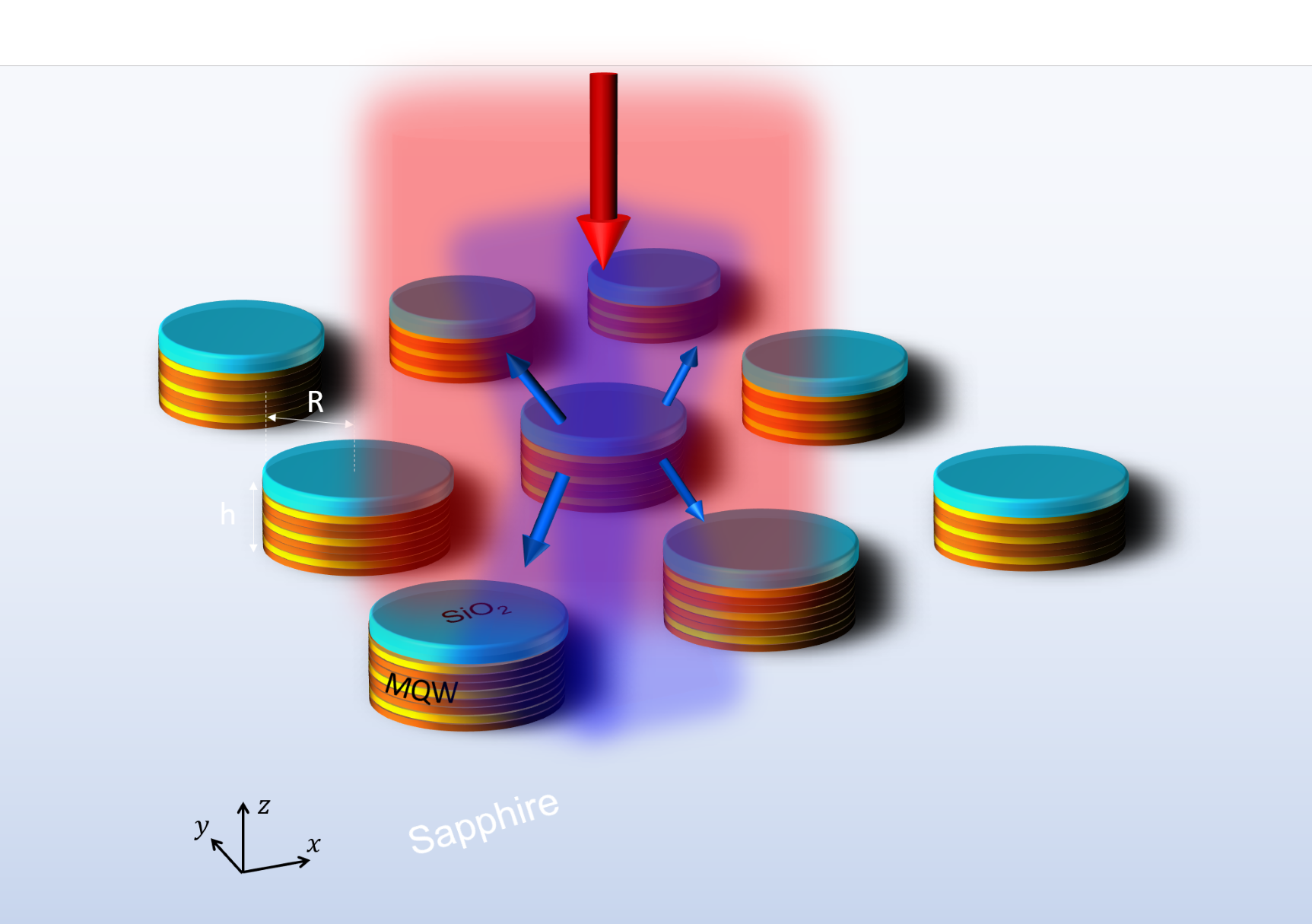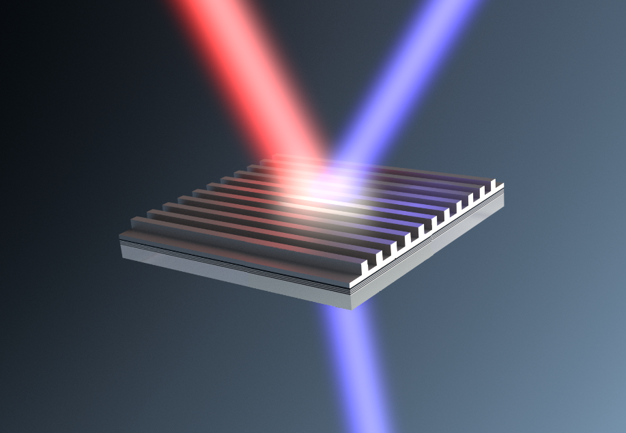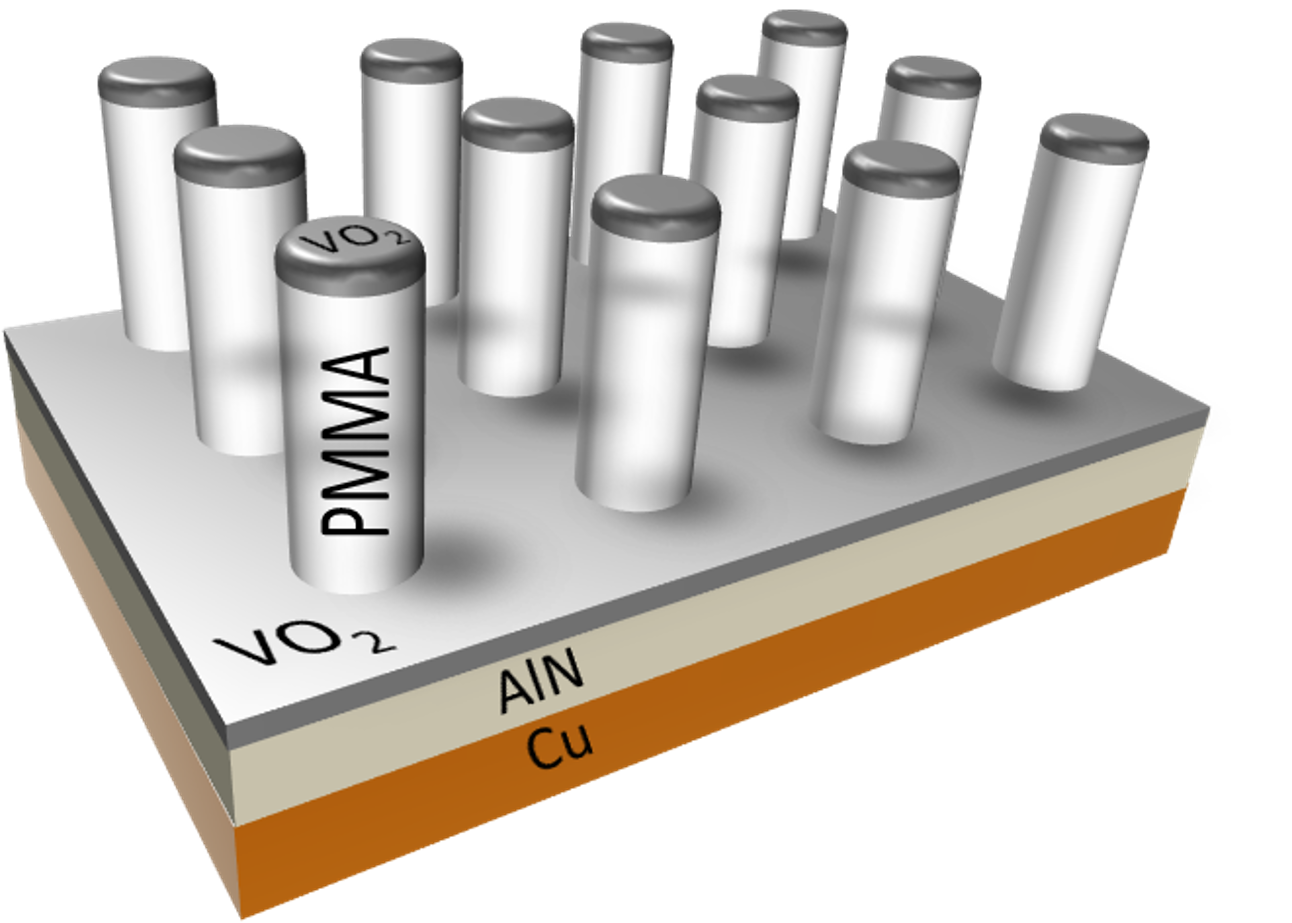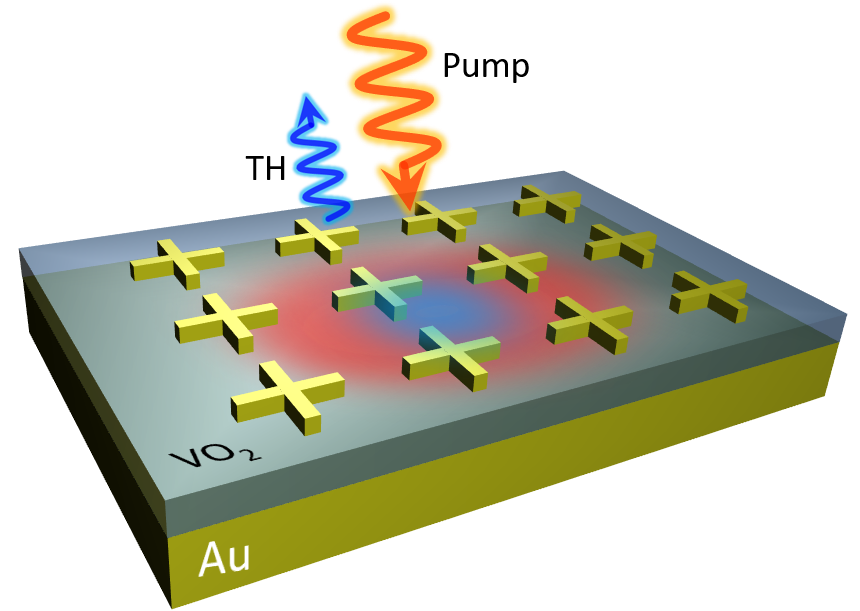Metasurfaces
Metasurfaces, i.e., periodic arrangements of either resonant or non-resonant meta-atoms, enable light management at the subwavelength scale. Flat lenses, ultra-compact beam steerers, polarization converters, angular filters, and frequency-selective filters can be realized by properly engineering the meta-atom. These structures can be designed with dielectrics, metals, or hybrid material systems, at any desired frequency, from radio-frequencies up to optical frequencies.
Our research mainly deals with plasmonic and dielectric metasurfaces for applications in the optical regime, with emphasis on nonlinear optical functionalities and tunable nanophotonic devices.
In collaboration with Sandia National Lab., we have recently demonstrated a hybrid approach for realizing strong coupling and efficient second-harmonic generation in ultrathin dielectric-semiconductor metasurfaces. These device shows low losses, high damage threshold, large bandwidth, wavelength scalability, dual mode operation in transmission and reflection, monolithic integrability, and ease of fabrication. We have demonstrated nonlinear conversion factors of ~ 1 mW/W^2 by exploiting high quality factor leaky mode resonances that are coupled to intersubband transitions of semiconductor quantum wells. These results open a new direction for designing low loss, broadband, and efficient ultrathin nonlinear optical devices. Then, in an another design configuration, we have demonstrated strong coupling of Mie-type resonances with intersubband transitions.


Nanophotonics with phase-change materials
One of the most challenging tasks in nanophotonics is to achieve tunable functionalities. We are currently investigating a new path to endow the optical response of nanostructures with tunability. In collaboration with Politecnico di Bari and Istituto Italiano di Tecnologia, we have demonstrated modulation of reflectance in response to a thermal stimulus in an array of pillars grown on top of a grounded, high-index slab. This photonic structure may host a variety of resonances that can be tuned across infrared and visible ranges, namely guided-mode resonances, Mie resonances, plasmonic resonances and Fabry-Pérot resonances.
When the structure is spin-coated with a nanofilm of vanadium-dioxide – a phase change material that switches from an insulator to a metal phase at 68°C – we have experimentally observed reflectance changes on the order of 10% near the resonances in the visible, and find good agreement with predictions based on numerical simulations. We are now focusing our efforts to find design strategies that improves the tunability in the visible range and to extend it in other portions of the spectrum.


